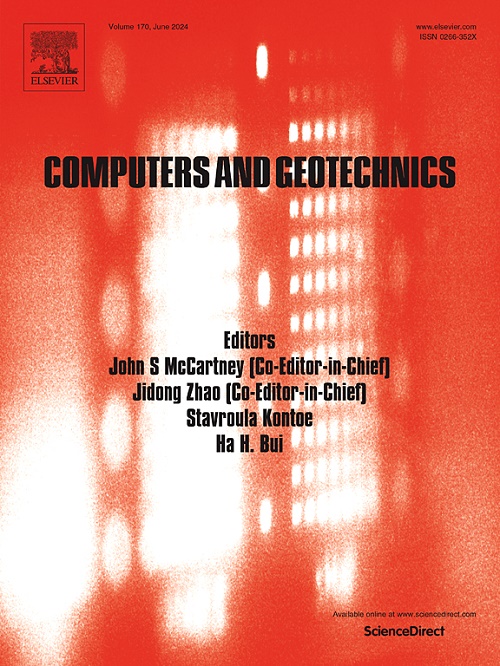A CT-XRD-based thermo-mechanical coupling DLSM for quantitative analysis of extreme temperature-induced damage in rocks
IF 5.3
1区 工程技术
Q1 COMPUTER SCIENCE, INTERDISCIPLINARY APPLICATIONS
引用次数: 0
Abstract
The extreme temperature damage of rocks is critical in various fields such as liquefied natural gas storage, geothermal extraction, and lunar surface exploration. However, efficient analytical methods for such extreme temperature ranges are lacking. To address this challenge, we propose a thermo-mechanical coupling Distinct Lattice Spring Model (DLSM) based on computerized tomography (CT) and X-ray diffraction (XRD) analyses. This approach enables the modeling of rock structures by integrating CT imaging with XRD mineral composition analysis, accounting for factors like pore distribution, porosity, ice saturation, mineral composition, and their corresponding strength distributions. By embedding this model into the thermo-mechanical DLSM, thermal damage simulations can be performed. The proposed method is validated through analytical solutions and experimental results, demonstrating its reliability. Parametric simulations were conducted, leading to several key conclusions. For low-porosity sandstone, the damage variable exhibits minimal change with temperature or saturation. Conversely, for high-porosity sandstone, temperature significantly influences damage. In the early cooling stage, the damage variable decreases sharply, while in later stages, the decrease is more gradual. The damage variable shows slight decreases with saturation and porosity but drops significantly after reaching critical thresholds for both. The study reveals further cooling damage mechanisms, including the effects of mineral shrinkage, ice expansion, temperature, porosity, and saturation. The weakening of damage with decreasing temperature is attributed to stress concentration relief and the reduction in the absolute coefficient of thermal expansion. This method offers a promising analytical tool for assessing thermal damage in rocks under extreme temperature conditions.
求助全文
约1分钟内获得全文
求助全文
来源期刊

Computers and Geotechnics
地学-地球科学综合
CiteScore
9.10
自引率
15.10%
发文量
438
审稿时长
45 days
期刊介绍:
The use of computers is firmly established in geotechnical engineering and continues to grow rapidly in both engineering practice and academe. The development of advanced numerical techniques and constitutive modeling, in conjunction with rapid developments in computer hardware, enables problems to be tackled that were unthinkable even a few years ago. Computers and Geotechnics provides an up-to-date reference for engineers and researchers engaged in computer aided analysis and research in geotechnical engineering. The journal is intended for an expeditious dissemination of advanced computer applications across a broad range of geotechnical topics. Contributions on advances in numerical algorithms, computer implementation of new constitutive models and probabilistic methods are especially encouraged.
 求助内容:
求助内容: 应助结果提醒方式:
应助结果提醒方式:


